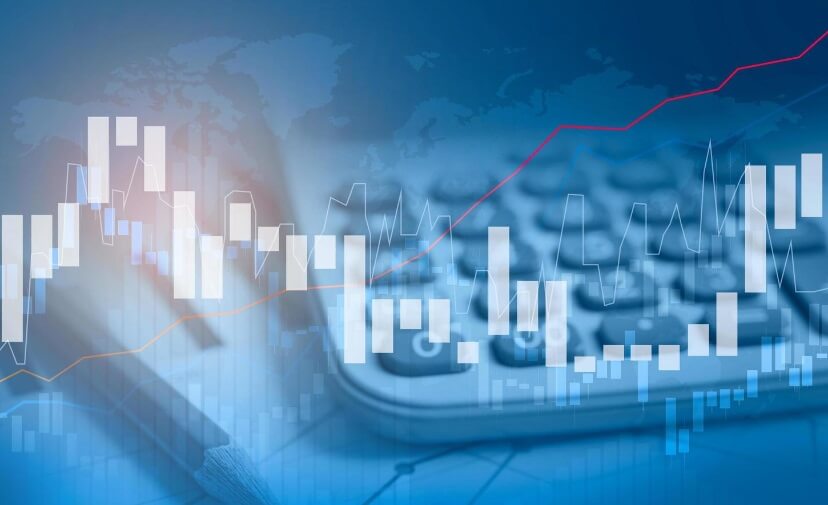
Journey back in time to explore the roots of global finance. This guide unveils the origins of forex trading, tracing its evolution, pivotal moments, and how it evolved into the dynamic and influential market we navigate today.
Forex trading emerged in ancient times when currencies began circulating. Its modern form, resembling today’s market, developed post World War II with the Bretton Woods Agreement in 1944, solidifying exchange rates against the US dollar.
Key Takeaways:
- Forex trading has a long history, dating back to ancient times.
- The barter system and the introduction of gold coins played a significant role in the evolution of forex trading.
- The gold standard and the Bretton Woods System were important milestones in the development of the forex market.
- The collapse of the Bretton Woods System led to the free-floating exchange rate system we have today.
- Understanding the historical context of forex trading provides valuable insights into the market’s current landscape.
When Did Forex Trading Start: A History
Amsterdam, 500 years ago, was the birthplace of the first forex market, marking a historic shift in financial transactions. This innovative marketplace allowed for the free exchange of currencies, contributing significantly to the stabilization of currency exchange rates. The ripple effect of this development was profound, as forex trading gradually spread across the globe.
The Gold Standard Era (1875-1913)
The gold standard, where paper money was backed by gold reserves, was adopted by many countries in the 1800s. However, it could not withstand the disruptions caused by the World Wars, leading to the collapse of the system. The Bretton Woods System, established after World War II, aimed to create a stable global economic order and introduced an adjustable pegged foreign exchange market. This system eventually failed, leading to the free-floating exchange rate system we have today.
The Gold Standard, implemented 240 years ago in 1875, aimed to anchor a country’s currency to its gold reserves, ensuring its stability and value. However, the aftermath of World War I led to the gradual abandonment of this standard, as nations faced the need to print more money to cover escalating expenses.
During this era, Pound Sterling emerged as a powerhouse, accounting for half of all forex transactions by 1913 in London. Despite its diminished role in recent years, Pound Sterling remains a significant player in the global forex market.
Ancient Roots of Forex Trading: Barter Systems and Babylonian Beginnings
Contrary to popular belief, the origins of forex trading date back to the Babylonian period when barter systems were prevalent. This early form of exchange laid the foundation for the intricate forex market we engage with today, illustrating the enduring nature of financial transactions through the ages.
In ancient times, money-changers, or “kollybistẻs,” played a vital role in facilitating currency exchange. Operating in city stalls and the Temple’s Court of the Gentiles during festivities, these individuals were the precursors to modern-day forex traders.
Ancient papyri from 259/8 BC Ancient Egypt reveal the occurrences of coinage exchange, highlighting the integral role of currency in trade. Currencies, pegged to gold and silver standards, dictated their value in material goods, shaping the early dynamics of forex trading.
Forex Trading in the 20th Century
The latter half of the 20th century witnessed significant changes in forex trading. State control ended in 1973, ushering in a new era of floating and relatively free market conditions. Global events, including the Bretton Woods Monetary Conference and the advent of the internet, played crucial roles in shaping the forex landscape.
With the rise of the internet, forex trading underwent a revolutionary transformation. Banks played a pivotal role in standardizing the market, while digital financial intermediaries, known as brokers, emerged to bridge the gap between individuals and the global forex market. Today, trading accounts can be created with ease through smartphones, democratizing participation in forex trading.
In modern times, central banks influence the forex market through daily monetary exchange rate fixes. Fixing rates serve as indicators of market trends, reflecting the equilibrium value of currencies. The mere anticipation of central bank intervention can stabilize currencies, although the market’s combined resources may sometimes overwhelm these efforts.
As we reflect on centuries past, the enduring legacy of forex trading becomes evident. From its humble beginnings in Amsterdam to the modern digital era, forex trading has evolved, leaving an indelible mark on the global financial landscape. The intricate interplay of historical events has shaped the forex market into the dynamic and accessible trading environment we navigate today.
Forex Fixing and Market Dynamics: Understanding Central Bank Interventions
Foreign exchange fixing, a daily practice facilitated by the national banks of each country, stands as a critical element in the dynamic landscape of the forex market. This process involves the determination of monetary exchange rates during a specified fixing time, providing a benchmark for evaluating a currency’s behavior. In essence, it reflects the real value of equilibrium in the market, offering insights into the broader economic conditions and global trade dynamics.
Fixing Rates as Market Trend Indicators
The fixing rates set by central banks serve as essential indicators of market trends. They offer a snapshot of the currency’s perceived value, influencing traders, banks, and financial institutions in their decision-making processes. Market participants closely monitor these fixing rates to gain insights into potential shifts in supply and demand, helping them formulate informed trading strategies.
The Role of Central Banks in Currency Stabilization
Central banks leverage foreign exchange fixing as a tool for currency stabilization. The mere expectation or rumor of a central bank’s intervention can be sufficient to stabilize a currency, instilling confidence in the market. This stabilizing effect is crucial in maintaining economic stability and preventing excessive volatility in the foreign exchange market.
Examples of Central Bank Interventions: Historical instances of central bank interventions underscore their significance in forex dynamics. The 1992–93 European Exchange Rate Mechanism collapse is a prime example where aggressive central bank interventions were witnessed. In this scenario, the combined resources of the market easily overwhelmed central banks, leading to a breakdown in the established exchange rate mechanism.
Asian Financial Crisis (1997)
Another notable example occurred during the Asian Financial Crisis in 1997, where central banks in affected countries intervened to stabilize their currencies. While some interventions were successful, others faced challenges due to the sheer magnitude of market forces. These instances highlight the delicate balance central banks must strike to achieve their objectives in the face of market pressures.
Challenges Faced by Central Banks
Despite their best efforts, central banks do not always achieve their intended outcomes. The global forex market’s vast size and liquidity can easily overpower individual central bank interventions. This reality was evident in various scenarios, emphasizing the complex nature of central bank interventions and the need for strategic decision-making.
In conclusion, understanding foreign exchange fixing and central bank interventions is crucial for participants in the forex market. These interventions play a pivotal role in shaping market dynamics, influencing currency values, and maintaining stability. Traders, investors, and financial analysts must remain vigilant to central bank actions, as they can significantly impact the course of global currency markets. The intricacies of foreign exchange fixing underscore the ongoing interplay between economic policies, market forces, and the pursuit of stability in the ever-evolving world of forex trading.
Key Events in the Evolution of Forex Trading
The forex market has undergone significant evolution throughout history, shaped by key events that have shaped its development. Understanding these events is crucial to gaining insight into the origins and growth of the forex market.
The Bretton Woods System (1944)
One of the most significant events in the evolution of forex trading was the establishment of the Bretton Woods System in 1944. This system aimed to create stability by fixing currencies to the US Dollar, which was in turn pegged to gold. The Bretton Woods System laid the foundation for the modern forex market by introducing an adjustable pegged foreign exchange market.
The Collapse of the Bretton Woods System (1971)
However, the Bretton Woods System eventually collapsed in 1971. President Richard Nixon ended the gold standard, causing the system to unravel. This marked a turning point for the forex market, as currencies became free-floating and their values were determined by supply and demand factors.
The Plaza Accord (1985)
In the 1980s, the Plaza Accord was a pivotal event in the forex market’s history. This agreement aimed to address imbalances in currency values, particularly the overvaluation of the US Dollar. As a result of the accord, the US Dollar experienced a significant decline, leading to adjustments in global currencies.
The Advent of the Euro (1999)
The establishment of the Euro in 1999 was another milestone in the evolution of forex trading. The Euro provided a unified currency for many European countries, streamlining trade and investment within the Eurozone. This development further expanded the forex market and influenced currency dynamics worldwide.
| Event | Description |
|---|---|
| The Bretton Woods System (1944) | Established a fixed exchange rate system, pegging currencies to the US Dollar |
| The Collapse of the Bretton Woods System (1971) | End of the gold standard, transition to free-floating exchange rates |
| The Plaza Accord (1985) | Addressed imbalances in currency values, leading to a decline in the US Dollar |
| The Advent of the Euro (1999) | Introduction of the unified Euro currency, transforming the European economy |
These events have been instrumental in shaping the forex market into the dynamic and global financial market it is today. Understanding their impact provides valuable insights into the forex market’s origins, development, and ongoing evolution.
Today’s Forex Trading Landscape
Today, the forex market is the largest market in the world, with over $5 trillion traded daily. It has become more accessible to individual traders, thanks to advances in technology and the internet. With the click of a button, traders can participate in forex trading from the comfort of their own homes, using online platforms and mobile apps to execute trades instantly.
The future of forex trading holds immense potential. As digital currencies gain popularity, they are gradually making their way into the forex market, providing alternative investment opportunities. Furthermore, advancements in artificial intelligence and big data analytics are revolutionizing trading strategies, allowing traders to make more informed decisions based on real-time insights and predictive analysis.
However, with increased accessibility and rapid technological advancements comes the need for continuous learning and adaptation. Traders must stay updated with the latest market trends, news, and analysis to navigate the ever-changing landscape successfully. Ongoing education is essential, with many trading platforms and educational resources offering courses, webinars, and tutorials to help traders improve their skills and understanding of the forex market.
In conclusion, the forex trading landscape of today is one of immense opportunity and constant evolution. As technology continues to advance and new financial instruments emerge, the future of forex trading holds promise for those who stay informed and adaptable. By staying abreast of market trends and continuously learning, traders can position themselves to take advantage of the potential gains in this dynamic and fast-paced market.
FAQ
What is the history behind forex trading?
Forex trading has a long and rich history, dating back to ancient times. It evolved from the barter system and the introduction of gold coins in the 6th century BC. The gold standard and the Bretton Woods System were significant milestones in the history of forex trading.
When did forex trading start?
Forex trading can be traced back to ancient times. However, the modern forex market as we know it began to take shape after the collapse of the Bretton Woods System in 1971.
What were the key events in the evolution of forex trading?
The establishment of the Bretton Woods System in 1944 and its subsequent collapse in 1971 shaped the forex market. The Plaza Accord in the 1980s and the introduction of the Euro in 1999 were also significant milestones.
What is the current landscape of forex trading?
Today, forex trading is the largest market in the world, with over $5 trillion traded daily. It has become more accessible to individual traders, thanks to advances in technology and the internet. Staying informed and adaptable is crucial for success in this dynamic market.

















